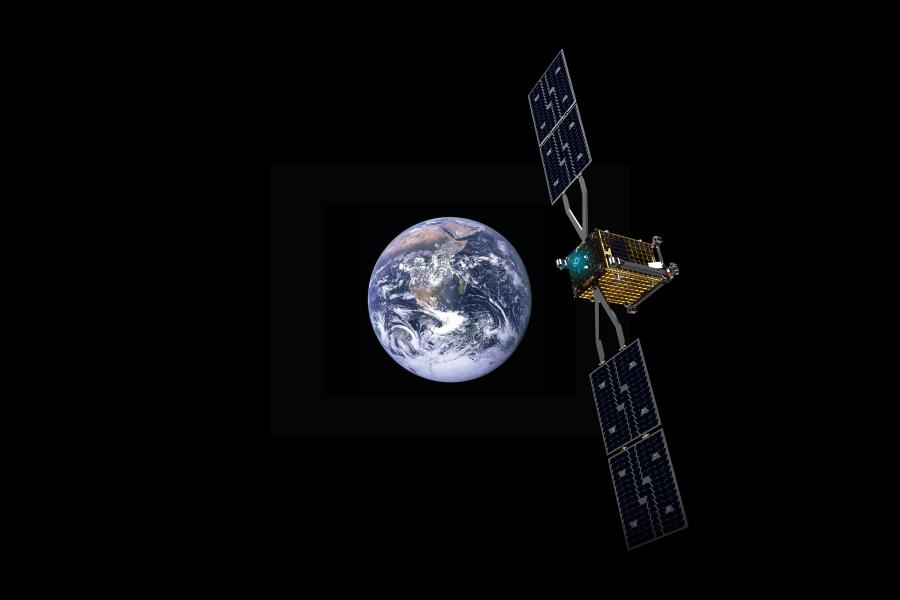The Space Force wants access to a fleet of small, maneuverable commercial satellites that can provide a range of services from geosynchronous orbit, chiefly satellite communications.
In an Oct. 8 notice to industry, the service said it plans to start a competition in January for the effort, dubbed Maneuverable GEO. The intent is to create a pool of contractors the service can tap, when needed, to supplement military capabilities. Importantly, the spacecraft should be able to maneuver—either to avoid debris or to move between orbital slots to provide better coverage to users in a given region.
That agility is particularly important for satellite communications missions, where different frequencies offer more or less security and bandwidth for operators.
“Combined with the need to supplement aging military satellite resources, the ability to provide these types of smaller, quicker satellite builds with maneuvering capabilities that are capable of providing access to, in particular, scarce military frequency bands is paramount to successfully supporting DOD operations and communications needs,” the service said in an earlier Sept. 15 notice.
Officials have been weighing the need for a program to leverage GEO-based commercial satellites, and the former head of the Commercial Space Office, Col. Rich Kniseley, discussed the concept on multiple occasions over the last year.
“That’s going to be a game-changer for us in the military, where you’re not at a stagnant orbit, and you’re able to drift from point to point, especially supporting us in the event of a regional or national war so that we can maneuver more of our capabilities to be more agile to the warfighter,” Kniseley told reporters in September 2024 at AFA’s Air, Space & Cyber Conference.
Beyond commercial SATCOM—which the service said is critical to supplement its aging and transitioning military SATCOM constellations—Space Force leaders envision the commercial fleet supporting more traditional capabilities like position, navigation, and timing, and environmental monitoring, as well as future missions like on-orbit manufacturing.
The Maneuverable GEO program includes three significant shifts the Space Force has pursued in recent years: mobility in orbit, proliferation, and hybrid military-commercial satellite fleets.
Underneath each of those focus areas is an imperative to build more resiliency into the service’s architecture to protect against growing threats from Russia and China—and to do so quickly. Maneuverable GEO, officials say, will help get after that goal.
“This combination of maneuverability using decentralized, spatially dispersed small and medium satellites increases the resilience of both the service overall and, in the case of [commercial SATCOM] services, the signal for any particular user,” USSF said in the September notice.


